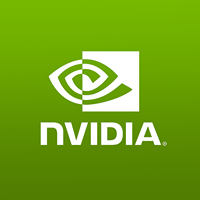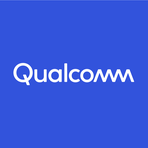The Race for Chip Supremacy: Samsung and Intel's Strategic Moves
October 6, 2024, 3:39 am
In the fast-paced world of technology, chip manufacturers are in a relentless race. Samsung and Intel are two giants vying for dominance. Each faces unique challenges and opportunities. Their strategies reveal much about the future of computing.
Samsung is ramping up its efforts to produce 2-nanometer chips. The company is installing new equipment at its S3 plant in Hwaseong. By early next year, it aims to process 7,000 silicon wafers monthly. This is a bold move. It signals Samsung's intent to reclaim its position in the semiconductor market.
But the road is rocky. Samsung's Exynos processors have struggled. They lag behind competitors like Qualcomm's Snapdragon. Many Samsung smartphones now use Snapdragon chips to compete globally. This shift highlights a significant issue. Samsung's technological gap affects not just its products but the entire electronics market.
The company plans to address this gap. By 2025, it will begin producing 1.4-nanometer chips at its S5 plant in Pyeongtaek. This is part of a broader strategy to modernize its production lines. The goal is clear: regain market leadership.
However, Samsung's contract manufacturing faces hurdles. Demand for 4-nanometer chips has waned. This has forced the company to pivot. One plant in Pyeongtaek is being converted to produce memory chips. Another plant is underutilized, impacting financial performance.
Rumors swirl about spinning off Samsung's contract manufacturing. This could attract investment. The company is also eyeing the U.S. market. A new factory in Texas, initially set for late 2024, has been delayed until after 2026. This factory aims to produce 3-nanometer chips. But challenges abound. Coordination with partners like Qualcomm and Japanese firms complicates matters.
On the other side of the semiconductor battlefield is Intel. The company is launching its new Xeon 6900P processors. This move comes amid financial struggles and rumors of a potential sale to Qualcomm. The Xeon 6900P is designed for demanding tasks, particularly in artificial intelligence (AI) environments.
Intel aims to capture the growing AI market. The Xeon 6900P series promises significant performance improvements. It supports DDR5 memory and boasts up to 128 high-performance cores. The flagship model, Xeon 6980P, can boost its clock speed to 3.9 GHz under heavy loads.
Intel's new processors are not just about numbers. They are designed for efficiency. The company claims a 60% increase in performance per watt compared to previous generations. This is crucial as data centers strive for energy efficiency.
However, Intel faces stiff competition from AMD. The new Xeon processors are better than their predecessors but still lag behind AMD's EPYC Zen 5. Intel's strategy seems reactive. It aims to regain lost ground, but the question remains: will it be enough?
Both companies are navigating a complex landscape. Samsung's focus on advanced manufacturing processes is essential. It must close the gap with TSMC, which currently leads the market. Meanwhile, Intel's Xeon 6900P processors must prove themselves in real-world applications.
The stakes are high. The global semiconductor market is projected to grow significantly. Companies are investing heavily in research and development. The demand for chips in AI, cloud computing, and mobile devices is skyrocketing.
As Samsung and Intel forge ahead, their strategies will shape the future of technology. Samsung's push for smaller chips could redefine mobile computing. Intel's Xeon 6900P may set new standards for server performance.
In this race, agility is key. Both companies must adapt quickly to market demands. They must innovate while managing production challenges. The next few years will be critical.
The semiconductor industry is a high-stakes game. Samsung and Intel are not just competing for market share. They are vying for the future of technology itself. The outcome of this race will impact everything from smartphones to data centers.
In conclusion, the battle between Samsung and Intel is far from over. Each company has its strengths and weaknesses. Their strategies will determine who leads the next wave of technological advancement. The world watches closely as these titans clash in the semiconductor arena. The future is uncertain, but one thing is clear: innovation will drive the next chapter in this ongoing saga.
Samsung is ramping up its efforts to produce 2-nanometer chips. The company is installing new equipment at its S3 plant in Hwaseong. By early next year, it aims to process 7,000 silicon wafers monthly. This is a bold move. It signals Samsung's intent to reclaim its position in the semiconductor market.
But the road is rocky. Samsung's Exynos processors have struggled. They lag behind competitors like Qualcomm's Snapdragon. Many Samsung smartphones now use Snapdragon chips to compete globally. This shift highlights a significant issue. Samsung's technological gap affects not just its products but the entire electronics market.
The company plans to address this gap. By 2025, it will begin producing 1.4-nanometer chips at its S5 plant in Pyeongtaek. This is part of a broader strategy to modernize its production lines. The goal is clear: regain market leadership.
However, Samsung's contract manufacturing faces hurdles. Demand for 4-nanometer chips has waned. This has forced the company to pivot. One plant in Pyeongtaek is being converted to produce memory chips. Another plant is underutilized, impacting financial performance.
Rumors swirl about spinning off Samsung's contract manufacturing. This could attract investment. The company is also eyeing the U.S. market. A new factory in Texas, initially set for late 2024, has been delayed until after 2026. This factory aims to produce 3-nanometer chips. But challenges abound. Coordination with partners like Qualcomm and Japanese firms complicates matters.
On the other side of the semiconductor battlefield is Intel. The company is launching its new Xeon 6900P processors. This move comes amid financial struggles and rumors of a potential sale to Qualcomm. The Xeon 6900P is designed for demanding tasks, particularly in artificial intelligence (AI) environments.
Intel aims to capture the growing AI market. The Xeon 6900P series promises significant performance improvements. It supports DDR5 memory and boasts up to 128 high-performance cores. The flagship model, Xeon 6980P, can boost its clock speed to 3.9 GHz under heavy loads.
Intel's new processors are not just about numbers. They are designed for efficiency. The company claims a 60% increase in performance per watt compared to previous generations. This is crucial as data centers strive for energy efficiency.
However, Intel faces stiff competition from AMD. The new Xeon processors are better than their predecessors but still lag behind AMD's EPYC Zen 5. Intel's strategy seems reactive. It aims to regain lost ground, but the question remains: will it be enough?
Both companies are navigating a complex landscape. Samsung's focus on advanced manufacturing processes is essential. It must close the gap with TSMC, which currently leads the market. Meanwhile, Intel's Xeon 6900P processors must prove themselves in real-world applications.
The stakes are high. The global semiconductor market is projected to grow significantly. Companies are investing heavily in research and development. The demand for chips in AI, cloud computing, and mobile devices is skyrocketing.
As Samsung and Intel forge ahead, their strategies will shape the future of technology. Samsung's push for smaller chips could redefine mobile computing. Intel's Xeon 6900P may set new standards for server performance.
In this race, agility is key. Both companies must adapt quickly to market demands. They must innovate while managing production challenges. The next few years will be critical.
The semiconductor industry is a high-stakes game. Samsung and Intel are not just competing for market share. They are vying for the future of technology itself. The outcome of this race will impact everything from smartphones to data centers.
In conclusion, the battle between Samsung and Intel is far from over. Each company has its strengths and weaknesses. Their strategies will determine who leads the next wave of technological advancement. The world watches closely as these titans clash in the semiconductor arena. The future is uncertain, but one thing is clear: innovation will drive the next chapter in this ongoing saga.

